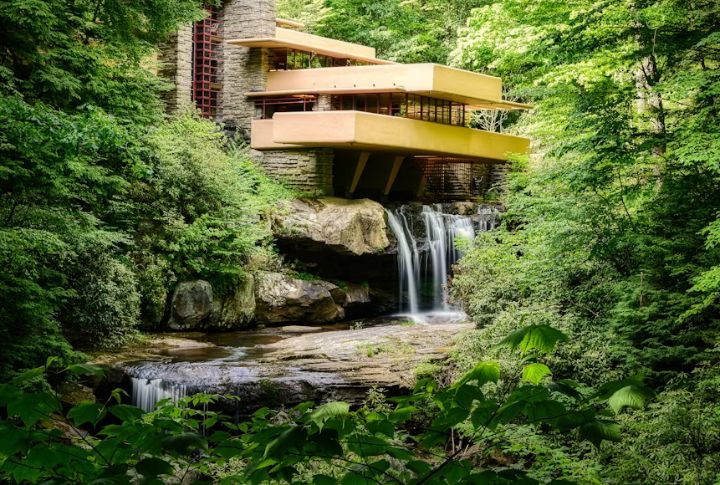
Apparently, “just four walls and a roof” wasn’t enough for these homeowners. In this collection of 20 strange houses, creativity didn’t just knock—it kicked the door down and redecorated the rules. Wild shapes meet fearless ideas in designs that refuse to play it safe. See how far imagination stretches when nobody’s holding it back.
Mushroom House (Perinton, New York, US)

Just outside Rochester, the structure looks like a cluster of massive toadstools balancing on thin stalks. Five rounded, pod-like units sit elevated on concrete columns. Huge curved windows dominate each pod, capturing the scenery and turning the natural world outside into a series of dynamic, live paintings inside the home.
Beer Can House (Houston, Texas, US)

It began as a personal recycling mission in 1968, but ended up becoming a landmark. Over fifty thousand aluminum beer cans now completely cover every exterior surface of the house. The cans are strung together to create shimmering metallic curtains and siding and turn the Houston residence into an incredibly dazzling tribute to repurposed materials.
Upside Down House (Trassenheide, Germany)

Stepping into the home instantly throws your senses into chaos because the entire structure is literally inverted. Its roof rests on the ground while the foundation points skyward. Inside, visitors walk upon the ceiling and gaze up at furniture—chairs, tables, even plants—meticulously fastened to what should be the floor.
Flintstones House (Hillsborough, California, USA)

This controversial residence is an architectural commitment to cartoon history. The entire home is composed of aerodynamic, bulbous, cave-like domes and curves achieved with steel and wire mesh covered in shotcrete. Its prehistoric aesthetic and orange color constantly clash with the wealthy neighborhood.
Cube Houses (Rotterdam, Netherlands)
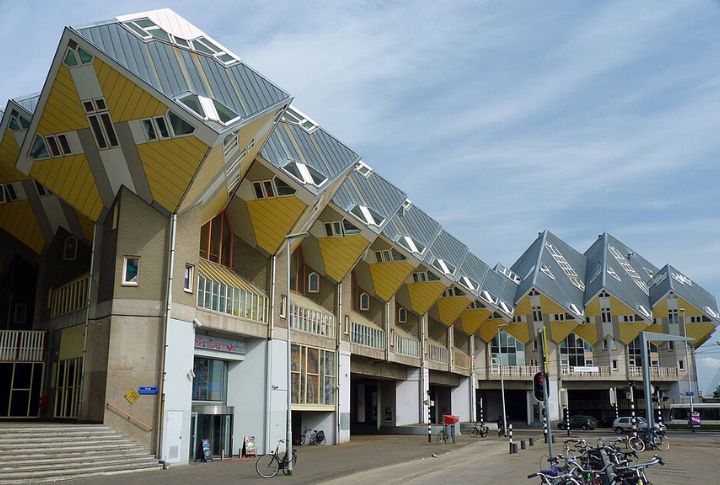
Imagine a whole neighborhood built from cubes tilted at a dramatic 55-degree angle. Architect Piet Blom stacked these structures on slim hexagonal pylons and turned the homes into an abstract geometric forest floating above the city. Inside walls are steeply slanted and demand a whole new way to think about interior design.
The Bubble House (Cannes, France)

Hungarian architect Antti Lovag believed human habitation should be spherical, so he built the home entirely out of interconnected bubbles. The house rejects every aspect of conventional, straight-lined patterns. It’s an impossibly curvy spectacle, eventually acquired by fashion icon Pierre Cardin, who used the amorphous spaces for grand events.
Transparent House (Tokyo, Japan)

Privacy is completely out of the picture here. The home, called House NA, is built almost entirely of glass with thin white steel frames. The challenging design features staggered internal platforms instead of closed rooms. Every corner of the home becomes a vertical stage filled with bright light.
The Steel House (Ransom Canyon, Texas, US)
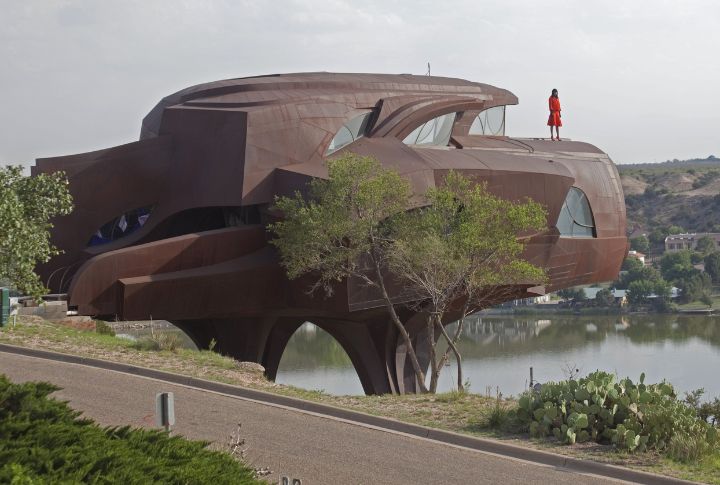
This place looks like a prehistoric metallic beast perched above the canyon view. Artist Robert Bruno spent over three decades crafting the 2,200-square-foot residence from salvaged oil field pipes and plates. It evolved slowly and functions as a home and a constantly changing heavy-metal sculpture simultaneously.
Hobbit House (Wales, UK)
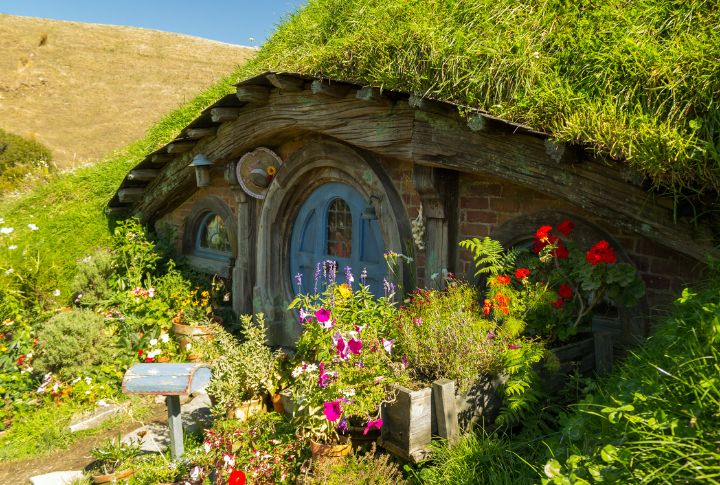
Simon Dale built it for just £3,000 (around $3,985) using basic tools and salvaged wood. It is essentially dug into the hillside for insulation and features a turf roof planted with grass. The aesthetic is completed by the famous round doors and windows, faithfully capturing the Shire’s design.
Stone House (Monsanto, Portugal)
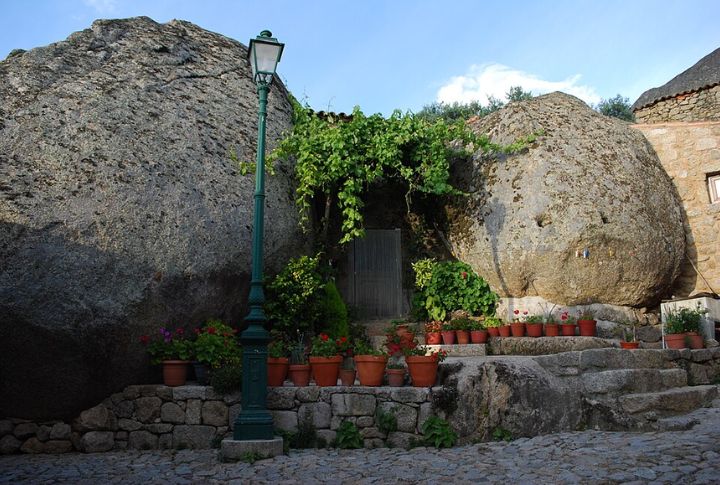
The bizarre structure here is a literal squeeze: entirely built between two absolutely massive granite boulders. The boulders form the natural ceiling and walls, making the house blend so seamlessly into the rocky landscape that it appears to be a natural, prehistoric shelter.
The Heliodome (Cosswiller, France)

Engineered for perfect sustainability, the home is essentially a giant, static solar tracker. Its massive, tilted, circular shape precisely captures the sun’s lower angle in winter to maximize passive heating. Conversely, the roof perfectly blocks the sun’s harsh, high angle during the summer to keep the interior cool.
Fallingwater (Mill Run, Pennsylvania, US)
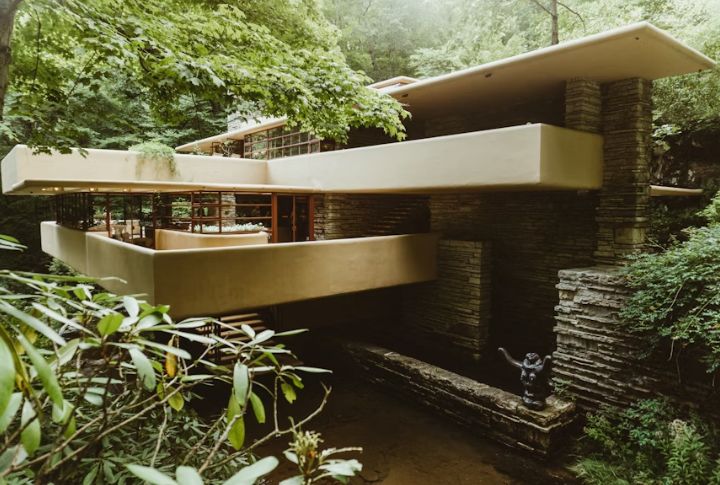
Frank Lloyd Wright’s masterpiece is defined by its dramatic integration with the natural site. It’s built directly over a running waterfall. Bold cantilevered concrete terraces jut out into space and create the illusion that the house is floating or organically growing out from the rock face above the stream.
The Mirrorcube Treehouse (Harads, Sweden)
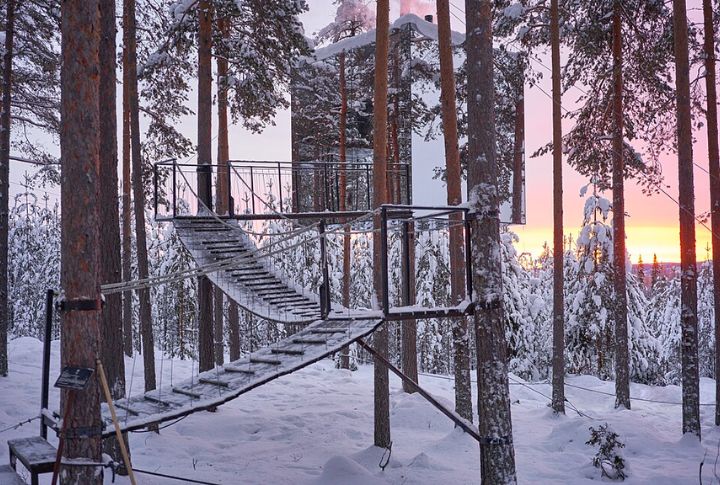
A perfect example of blending in by standing out, this treehouse is a four-by-four-meter lightweight aluminum box clad entirely in mirrored glass. The house is suspended in the trees and echoes the forest and the sky, and leaves the structure practically invisible, which tests the eye.
Drina River House

Drina River House is a cool way to live close to nature. It’s a small wooden cabin built on a rock in the middle of the Drina River. In summer, it gives amazing views and feels super peaceful. In winter, it stays strong against the cold and keeps things warm and cozy inside.
Hundertwasser House (Vienna, Austria)
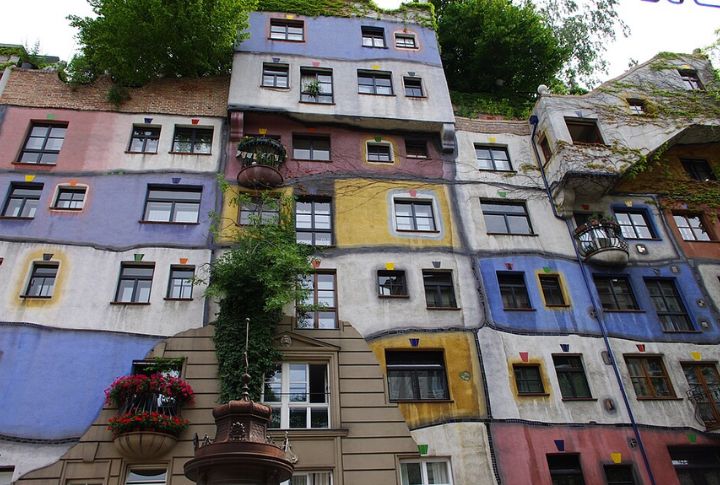
Artist Friedensreich Hundertwasser designed the apartment block to deliberately reject straight lines and conformity. It features undulating floors, vibrant primary colors, and trees growing out of the windows and balconies. The whole building is an architectural explosion of deliberate chaos.
Spaceship House (Chattanooga, Tennessee, USA)

Designed in the 1970s, this flying saucer-shaped home looks like it could lift off at any moment, with its smooth, disc-like exterior and six sturdy concrete legs that uplift it above the ground. There is a retractable staircase, like something out of a sci-fi movie, and the inside makes you feel like you’ve stepped into a time capsule.
Crazy House (Dalat, Vietnam)

A guesthouse resembles a gigantic and sculpted tree trunk. Architect Dang Viet Nga used organic curves and surreal shapes to create a network of winding staircases, tunnels, and rooms. Walking through the structure feels like exploring a bizarre, fantastical forest.
Twisted House (Indianapolis, Indiana, USA)

Artist John McNaughton used standard residential components to create an impossible, distorted illusion. The house appears bent and warped, as if caught mid-twist by a powerful, unseen force. It reshapes the mundane image of a suburban home into a striking piece of public art that challenges the viewer’s perspective.
Bottle House (Rhyolite, Nevada, USA)

Tom Kelly built the Bottle House from over 50,000 glass bottles, mostly gathered from nearby saloons during the gold rush era. With bricks in short supply, Kelly got creative and stacked the bottles like bricks and sealed them with adobe mortar. The result? A surprisingly sturdy home where sunlight filters through the colored glass across the interior.
The Keret House (Warsaw, Poland)
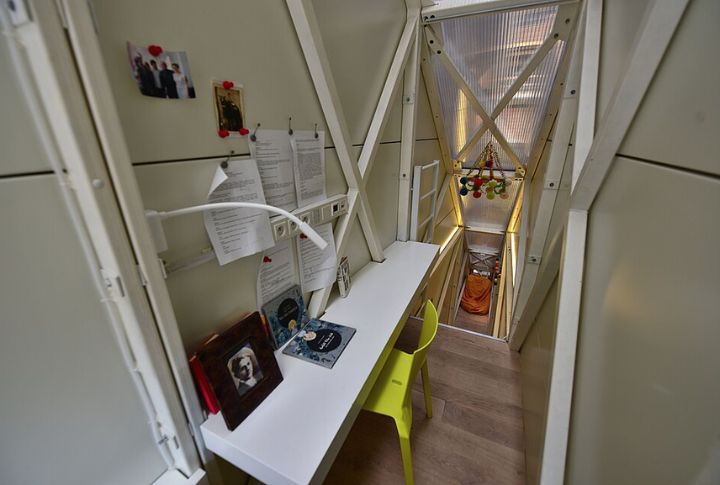
Imagine squeezing an entire home into a space barely wider than a hallway and still feeling livable. It measures just 92 centimeters at its narrowest point and 152 centimeters at its widest, making it incredibly compact. Despite its tiny footprint, the house includes a bedroom, bathroom, kitchen, and workspace—all stacked vertically across two levels.

